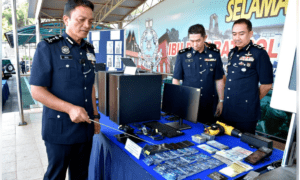Between decentralized protocols, tokens, DAOs, and ever-changing narratives, you may find yourself overwhelmed. If you’re looking to navigate the crypto space with confidence, you’ll need a solid approach. Whether you’re exploring a new project or trying to understand tokenomics, this article will share some tips for you to have an effective research process that helps you make smarter choices.
1. Understand the Project’s Core Purpose
Start by figuring out what a Web3 project is trying to solve. Ask yourself, what is the use case? Is it solving a real problem, or just repackaging old ideas with flashy branding? Aside from that, you should look through the whitepaper, official or roadmap, because they usually reveal whether a project has a clear direction or just buzzwords. If the idea feels vague or overpromised, take a step back.
2. Check the Team’s Background
Next, focus on the people behind the project, like who’s building it and what their track record is. You want to know if the developers or founders have experience in crypto or business. Since Web3 emphasizes decentralization, some projects may not list a public team, so see how active the developers are in public forums. If updates and contributions are consistent, that’s usually a positive sign.
3. Follow On-Chain Activity
Explore wallet addresses, transaction volume, or smart contract interactions using tools like Etherscan or Dune Analytics. When you look into token movement and liquidity, you’ll get a sense of how active the community is. However, if tokens are sitting idle in a few wallets or if liquidity is suddenly pulled, that’s a red flag. Moreover, web3 research thrives on transparency; use that to your advantage.
4. Join the Conversation
Jump into Discord channels or X (formerly Twitter) and watch how the community interacts. Always remember that having a strong, informed, and respectful community often signals a healthy project. Keep an eye on the kind of updates being shared, like are the developers are active or is the roadmap is being followed. By doing this, you’ll learn a lot just by watching and asking thoughtful questions.
5. Study the Tokenomics
You need to understand how the tokens are distributed, how they’re used, and whether they bring real value. Dig into the utility of the token, and if it’s just being used for speculation with no real function, it might not have long-term value. But if it’s tied to governance, staking, or access to services, that’s usually a good sign. The way tokens are structured plays a major role in a project’s sustainability.
6. Analyze the Partnerships
Look into which other companies or DAOs are backing or integrating with the project. Strategic partnerships with well-known names often indicate legitimacy and momentum. Make sure those partnerships are real and active. Sometimes, names get dropped just to boost hype; that’s why you should check for announcements or collaborative features to see if the connection is authentic.
7. Keep an Eye on Security
Security in crypto isn’t optional, it’s a must since you’re trusting smart contracts and decentralized systems with real money. That’s why you should look into whether a project has been audited. You also want to understand how the protocol handles risks, like does it has a bug bounty program? Take note that these small details say a lot about whether the project takes security seriously.
Let Smart Research Lead You to Real Web3 Wins!
When you approach research with patience and structure, you position yourself to spot the winners early and avoid the hype traps. Every project may sound exciting at first glance, but your research helps cut through the noise. Stay curious and never skip the basics. Web3 is still young, which means the best opportunities are hiding in plain sight; you just need to know where and how to look.



































